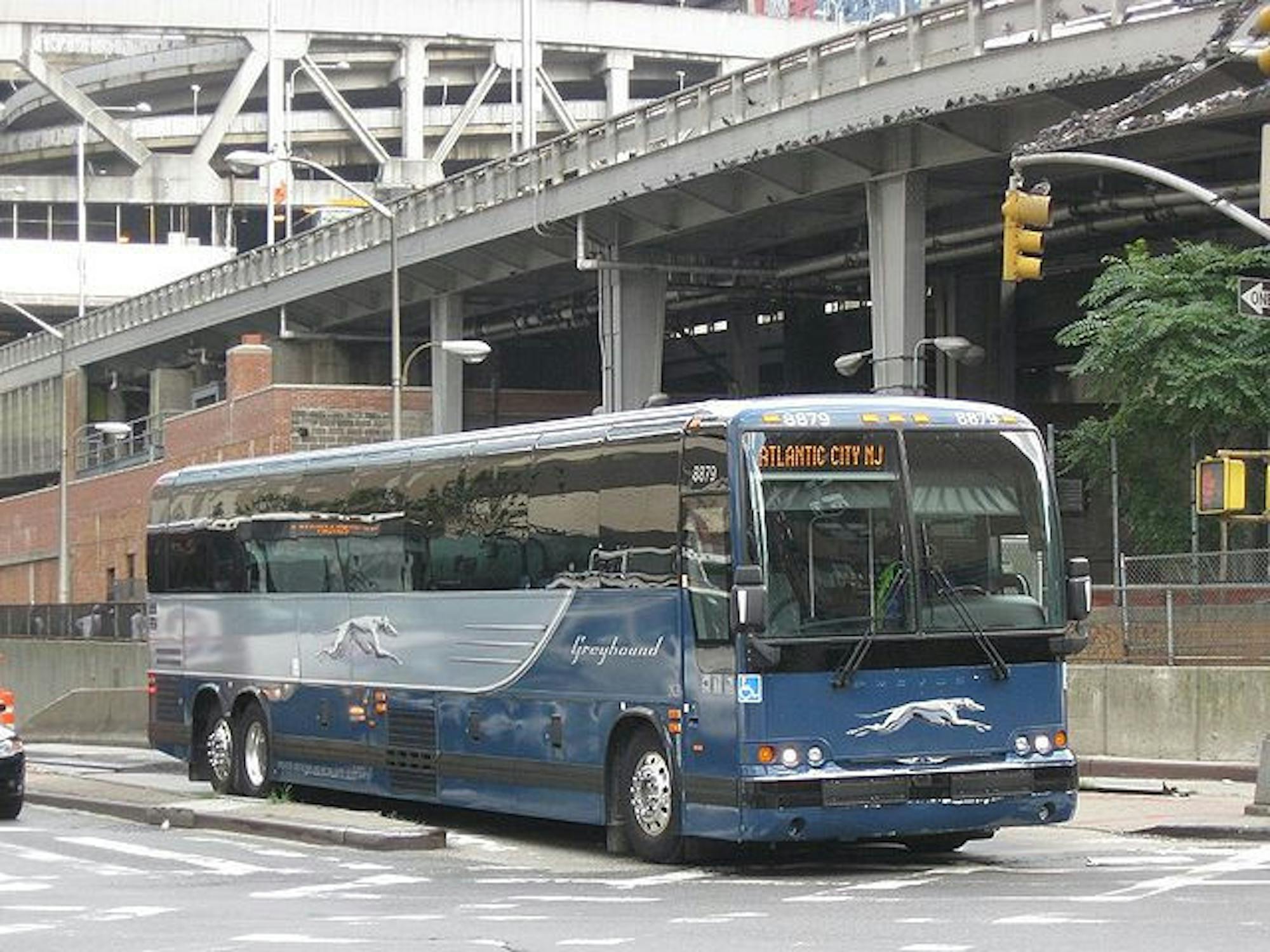
I recently traveled six hours on a Greyhound bus, most of which I spent hoping that I would make it to my destination in one piece.
“Don’t get off at the rest stop!” my friends cautioned me. “If you stay on board and sit close to the driver, you’ll probably be fine.”
On my way off the bus, an old man asked me if I was leaving, and when I said yes, he replied with “too bad,” presumably with the intention of making a young solo female traveler feel unsafe and objectified on public transportation. Later that weekend, my JetBlue plane somehow took off without my checked bag on board, leaving me without toiletries or clean clothes until the airline apologetically shipped me my belongings.
My spring break travel struggles only confirmed what I’d suspected to be true: buses are scary at night, budget airlines are unreliable and Americans need a national high-speed rail system to save travelers from rickety bus journeys in the dead of night. Unfortunately, thanks to the country’s aptitude to politicize even the most rational of ideas, that can’t happen.
The tragic impossibility of a high-speed railroad is best illustrated by the derailment of a California dream to connect Los Angeles and San Francisco through the United States’ first bullet train. Aspirationally, the rail would reduce the travel time between L.A. and San Francisco from six to under three hours and would save California from constructing another freeway doomed to become a congested hub of exhaust and pollution. It would connect 85% of California’s residents quickly and efficiently. It would also cost $113 billion, detouring through mountain ranges and deserts to avoid the San Andreas fault line. The rail is also unlikely to be completed in the next century. These pitfalls set the stage for the idea to fall at the hands of partisan bickering.
The railroad is under attack from both Democrats and Republicans, who turned a perfectly good idea into an unbelievably expensive and borderline unachievable infrastructural nightmare. Even the state legislature, which had once been the train’s support base, and Gov. Gavin Newsom (D-Ca.), are hesitant to commit new state funding to the plan, which has become exponentially more expensive since it was originally proposed in 2008. Added stops and strategic reroutings meant to garner funding and approval from local governments have resulted in increased costs. In addition, only a small fraction of U.S. infrastructure funding goes toward mass transit and trains due to a conservative dislike of federal spending on transportation; it’s certainly not enough to cover the $113 billion it’ll cost to get the train moving. If California is lucky, the train will run from Bakersfield to Merced, as Newsom recently decreed. Anything more is a pipe dream.
It goes without saying that the fantasy of a national high-speed rail, illustrated in a widely-circulated meme of a map with interconnected rail lines drawn on, will not come to fruition in the coming centuries. This is devastating because high-speed trains emit less carbon than airplanes and would improve access for low-income communities that don’t have equal access to transit. It is yet another example of politics inhibiting human rights. Issues like transportation equity, voting access, healthcare and even war, which should be looked at through a human rights lens are immediately politicized. For example, healthcare and transportation access are issues to be debated between parties rather than inherent rights. This inhibits the government from looking at problems through an objective lens and introduces an alternate agenda: the acquisition of political power by politicians as they selectively choose which issues deserve governmental support. The California high-speed rail wasn’t rerouted to grant transportation access to more people; it was rerouted in the interest of getting political support for the project.
Such selfishness — prioritizing political power over Americans’ quality of life — lies at the crux of this country’s government structure and holds it back from achieving equity in infrastructure, healthcare and more. It’s why the U.S. cannot match Europe’s and Asia’s efficient, speedy rail systems. Our government and its divisiveness sets us apart. After all, a country that can’t even agree that every person deserves healthcare is not a place where a unifying transportation system will thrive. The inability of the U.S. to decide what infrastructure deserves funding is an unsurpassable hindrance. The U.S. is evidently comfortable with these partisan divisions to the point where two parties can’t come together and build a more sustainable future for the country, in which everyone can travel without having to pay for gas, wait in security lines or cower in the front of the Greyhound bus at 2 a.m.
Fixing this problem isn’t as simple as hammering some railroad tracks into the ground. It’s going to require an entire country's mentality toward public works — initiatives carried out by the government specifically to help a community — to shift. Nothing will change until the country agrees that these systems, such as welfare, healthcare and transportation, deserve adequate funding.
In the meantime, all we can do is continue to make the same choice over and over again: inefficient and cheap transportation like a day-long Greyhound journey or speedy and expensive like a flight. Before an interstate high-speed rail can be built, the country has an obligation to fix infrastructure on a local level. In Atlanta, it’s the choice between taking the MARTA and calling an Uber. Fix public infrastructure, and the MARTA can function like the New York City subway system, which unifies people from all socioeconomic classes and neighborhoods and provides them with equal access to resources and job opportunities within Manhattan. Until then, all we can do is advocate for selfless politicians who intend to fix our cities and make them more accessible for the good of the community. And maybe someday, the entire country will follow suit.
Sophia Peyser (25C) is from New York, New York.

Sophia Peyser (she/her) (25C) is from New York City, majoring in creative writing and environmental science. Outside of the Wheel, Peyser has worked as a content writer and freelance journalist. You can find her reading Sally Rooney novels or working shifts at a Brooklyn bakery.





